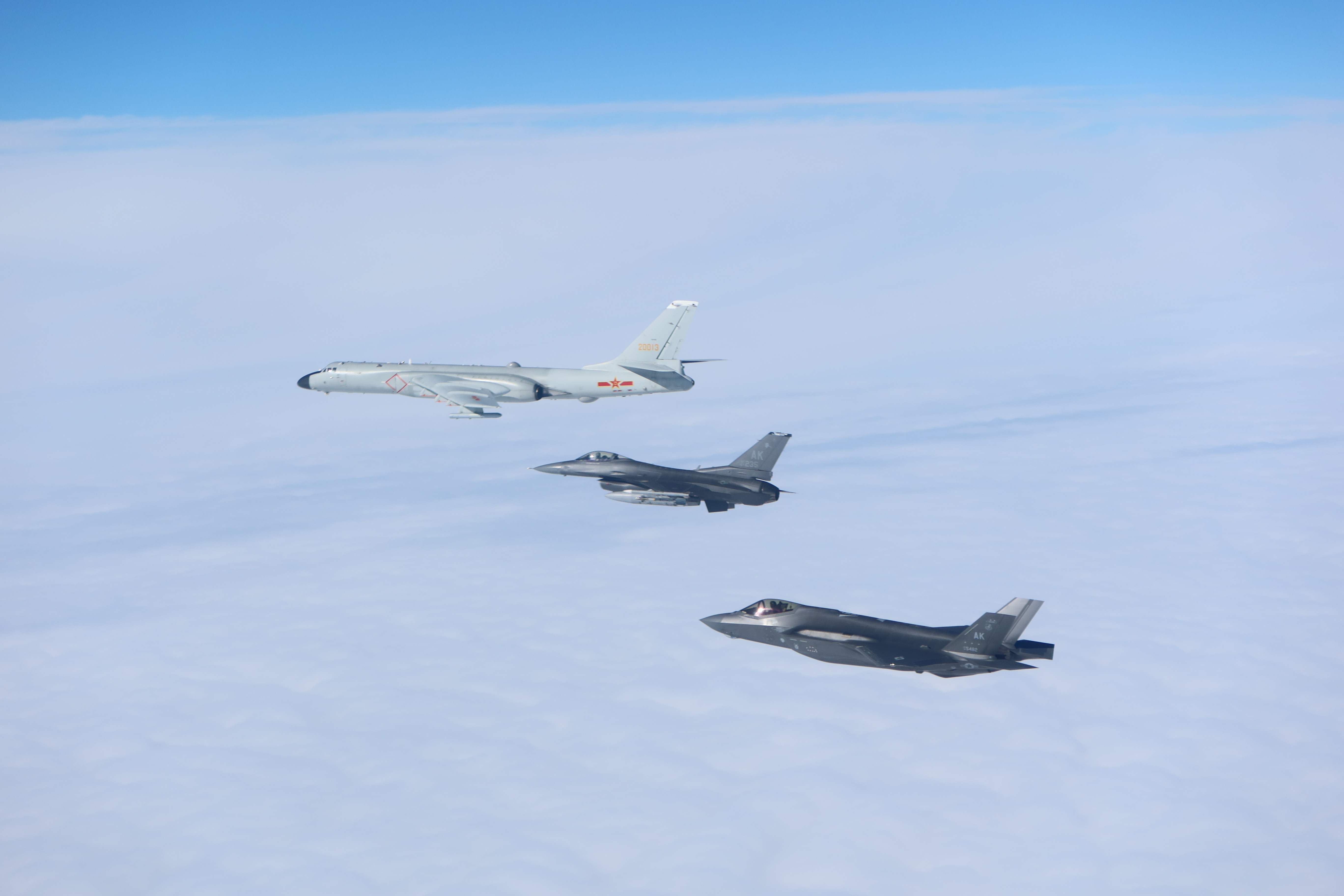
Tensions in Eastern Europe remain high as NATO forces intercepted Russian fighter jets that violated Estonian airspace. The incident, which occurred recently, prompted a swift response from NATO’s air policing mission in the Baltics, underscoring the alliance’s commitment to defending its member states.
Estonian officials confirmed the incursion, stating that three Russian fighter jets crossed into their airspace without permission. This act was quickly condemned by NATO, which described it as reckless and a violation of international norms. The interception serves as a stark reminder of the ongoing security challenges in the region.
Details of the Airspace Violation
Initial Reports and Confirmation
The first reports of the airspace violation emerged early in the morning, with Estonian radar systems detecting unidentified aircraft approaching their borders. As the aircraft crossed into Estonian airspace without proper authorization, the Estonian Air Force immediately alerted NATO’s Combined Air Operations Centre (CAOC). The CAOC then ordered the launch of Quick Reaction Alert (QRA) aircraft to intercept and identify the intruders.
Estonian authorities have officially confirmed that the aircraft involved were indeed Russian fighter jets. The specific types of aircraft and their flight paths are still under investigation, but the violation has been unequivocally established. The Estonian Ministry of Foreign Affairs is expected to issue a formal diplomatic protest to Russia.
NATO’s Response and Interception
Upon receiving the alert, NATO scrambled fighter jets from its air policing mission. These jets, which included Italian F-35s currently stationed in Estonia, swiftly intercepted the Russian aircraft. The interception was conducted in accordance with international protocols, with the NATO jets visually identifying the Russian planes and escorting them out of Estonian airspace.
The speed and efficiency of NATO’s response demonstrate the effectiveness of its air policing mission in the Baltics. This mission, which involves contributions from various NATO member states, is designed to provide a continuous presence and deter potential threats to the security of Estonia, Latvia, and Lithuania.
A U.S. Air Force F-16 Fighting Falcon, assigned to the 480th Fighter Squadron, flies alongside a Polish F-16 during a training mission over Poland, July 24, 2024. Such training exercises are crucial for maintaining readiness and interoperability among NATO allies, ensuring a swift response to incidents like the recent Nato intercepts Russian warplanes violating Estonian airspace.
Geopolitical Context
The incident occurred amidst heightened tensions between Russia and NATO, particularly in the wake of the ongoing conflict in Ukraine. Russia’s military activities in the Baltic Sea region have been a source of concern for NATO, with several previous incidents of airspace violations and close encounters between Russian and NATO aircraft.
Estonia, along with Latvia and Lithuania, are particularly vulnerable due to their geographical proximity to Russia and their historical experiences with Soviet occupation. These countries have been strong advocates for a robust NATO presence in the region to deter potential aggression and ensure their security.
Reactions and Statements
Estonian Government’s Condemnation
The Estonian government has strongly condemned the airspace violation, calling it a deliberate provocation and a violation of international law. Prime Minister Kaja Kallas stated that such actions are unacceptable and undermine regional stability. She emphasized Estonia’s commitment to working with its NATO allies to ensure the security of its borders and airspace.
The Estonian Minister of Foreign Affairs has summoned the Russian ambassador to deliver a formal protest. The government is also considering additional measures to strengthen its border security and enhance its cooperation with NATO.
NATO’s Official Response
NATO has issued a statement condemning Russia’s actions and reaffirming its commitment to the collective defense of its member states. The alliance emphasized that it maintains a constant presence in the Baltic region to deter aggression and ensure the security of its allies. NATO Secretary-General Jens Stoltenberg reiterated that any attack on one NATO member would be considered an attack on all.
NATO officials have also expressed concern about the increasing frequency of Russian military activities in the Baltic Sea region. They have called on Russia to abide by international law and to refrain from provocative actions that could escalate tensions.
International Community’s Concerns
The airspace violation has drawn condemnation from other countries and international organizations. The United States, the United Kingdom, and other NATO member states have expressed their solidarity with Estonia and have called on Russia to respect the sovereignty of its neighbors.
The European Union has also voiced its concern, with the EU’s High Representative for Foreign Affairs and Security Policy Josep Borrell stating that such incidents undermine trust and stability in the region. He called on Russia to engage in constructive dialogue and to de-escalate tensions.
Implications and Future Outlook
Increased NATO Vigilance
In response to the airspace violation and other recent incidents, NATO is likely to increase its vigilance and strengthen its presence in the Baltic region. This could involve deploying additional troops, aircraft, and naval vessels to the area, as well as conducting more frequent training exercises with its allies.
NATO is also considering enhancing its air defense capabilities in the Baltics, including the deployment of additional radar systems and surface-to-air missiles. These measures are designed to improve the alliance’s ability to detect and respond to potential threats to its airspace.
Potential for Escalation
While the airspace violation itself did not result in a direct military confrontation, it does raise the potential for escalation. Any miscalculation or misunderstanding could lead to a more serious incident, with potentially far-reaching consequences.
Analysts have warned that Russia may be deliberately testing NATO’s resolve and probing for weaknesses in its defenses. By conducting these types of provocative actions, Russia may be seeking to undermine NATO’s credibility and to sow discord among its member states. According to some reports, Putin may have a plan to test Europe’s defenses. related coverage
Diplomatic Efforts
Despite the heightened tensions, diplomatic efforts are ongoing to try to de-escalate the situation and to prevent future incidents. NATO and Russia maintain channels of communication, and there have been periodic meetings between officials from both sides to discuss security concerns and to seek ways to improve transparency and predictability.
However, progress has been limited, and the relationship between NATO and Russia remains deeply strained. The ongoing conflict in Ukraine and other disagreements over security issues continue to cast a shadow over any potential for improved relations.
Key Takeaways
- Russian fighter jets violated Estonian airspace, prompting a response from NATO.
- NATO intercepted the Russian aircraft and escorted them out of Estonian airspace.
- The incident has heightened tensions between Russia and NATO.
- NATO is likely to increase its vigilance and strengthen its presence in the Baltic region.
- Diplomatic efforts are ongoing to de-escalate the situation.
FAQ
Why is NATO concerned about Russian airspace violations?
NATO views airspace violations as a serious breach of international law and a threat to the sovereignty of its member states. These incidents can also increase the risk of miscalculation and escalation, potentially leading to a more serious conflict.
What is NATO’s air policing mission in the Baltics?
NATO’s air policing mission in the Baltics is a continuous operation designed to provide a presence and deter potential threats to the security of Estonia, Latvia, and Lithuania. The mission involves contributions from various NATO member states, which rotate their aircraft and personnel on a regular basis.
What are the potential consequences of an airspace violation?
Airspace violations can lead to diplomatic protests, increased military deployments, and a heightened risk of miscalculation and escalation. In some cases, they can also result in military confrontations, although this is rare.
How does NATO respond to an airspace violation?
When an airspace violation is detected, NATO typically scrambles fighter jets to intercept and identify the intruding aircraft. The NATO jets will then visually identify the aircraft and escort it out of the airspace. NATO may also issue a formal protest to the country responsible for the violation.
What measures are being taken to prevent future airspace violations?
NATO is taking a number of measures to prevent future airspace violations, including increasing its vigilance, strengthening its presence in the Baltic region, and enhancing its air defense capabilities. Diplomatic efforts are also ongoing to try to de-escalate the situation and to improve transparency and predictability.
In conclusion, the recent interception of Russian warplanes by NATO after violating Estonian airspace underscores the persistent tensions and security challenges in the Baltic region. The swift response by NATO reaffirms its commitment to defending its member states and maintaining stability in the area. As the situation remains volatile, continued vigilance and diplomatic efforts are crucial to prevent further escalation and ensure the security of the region. To stay informed about similar events, consider following news from reliable sources.

